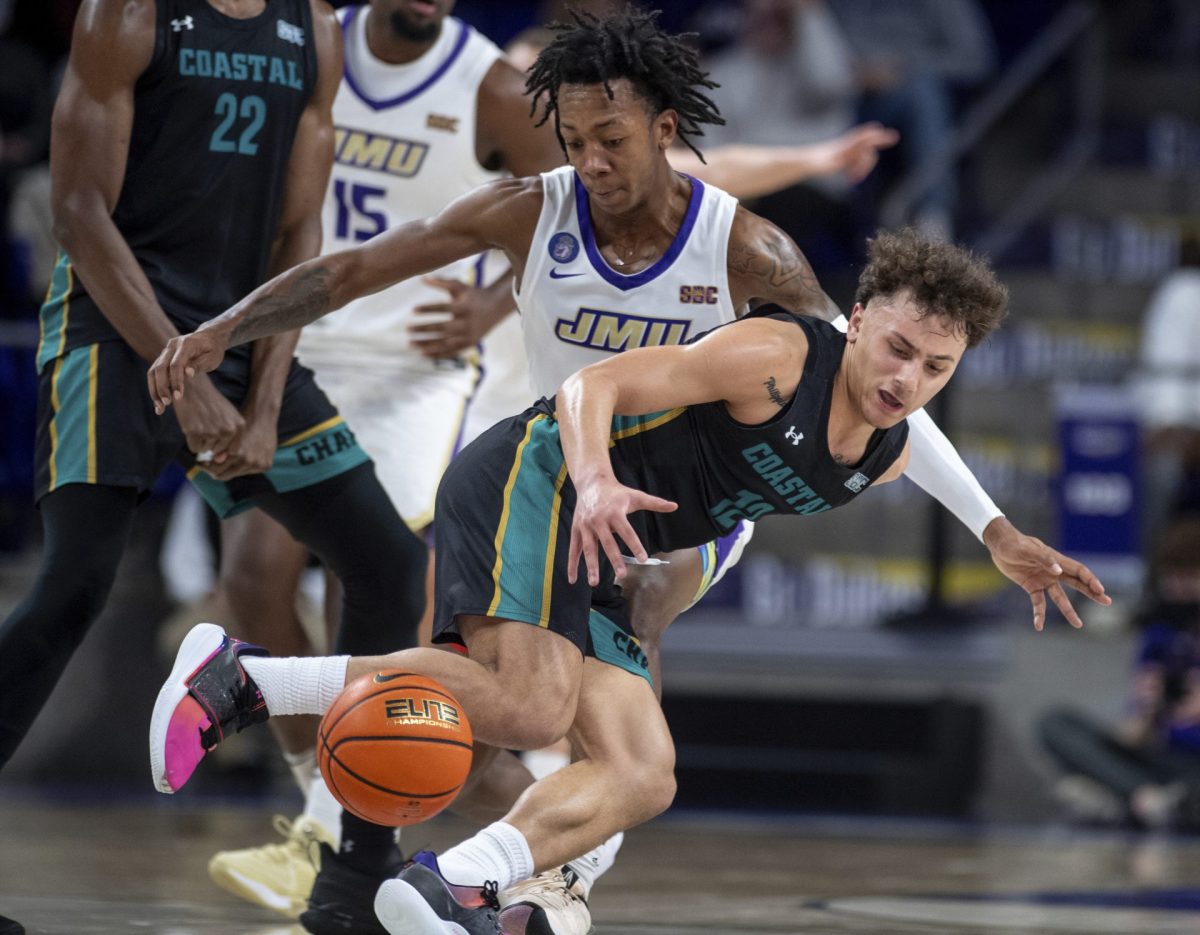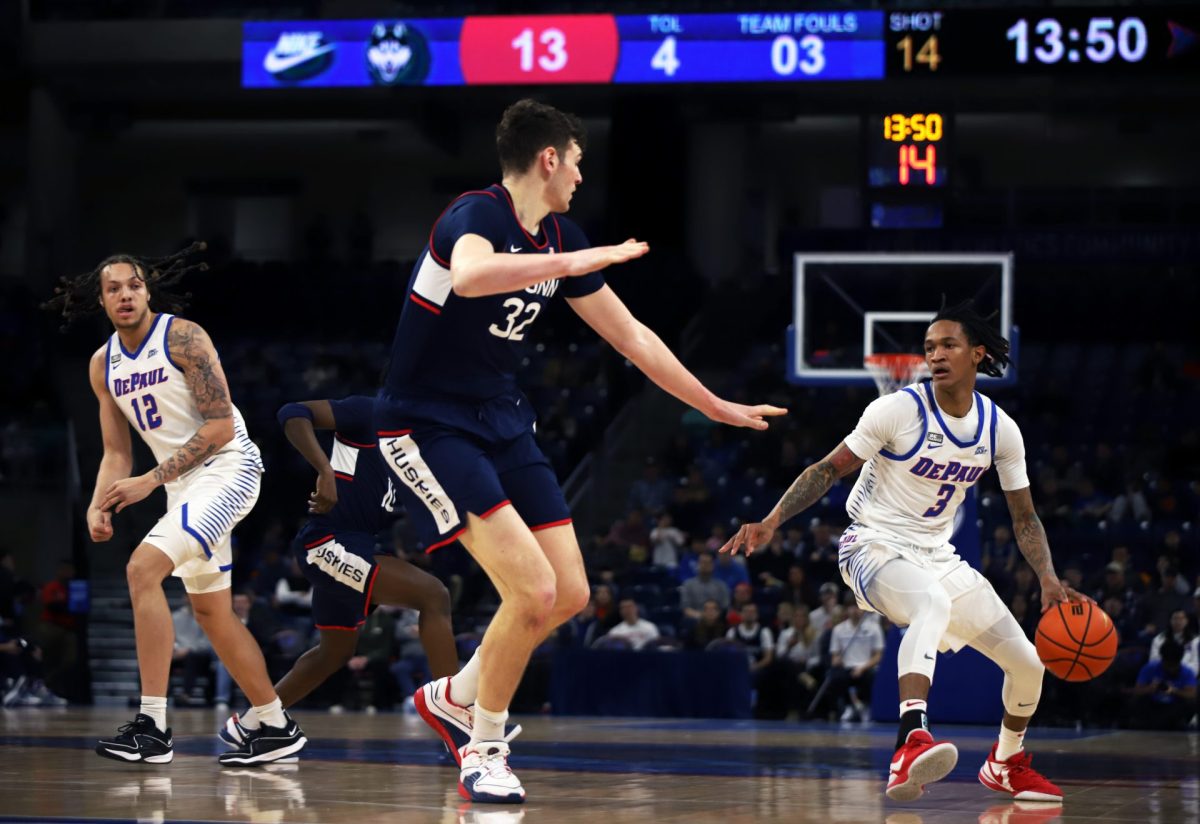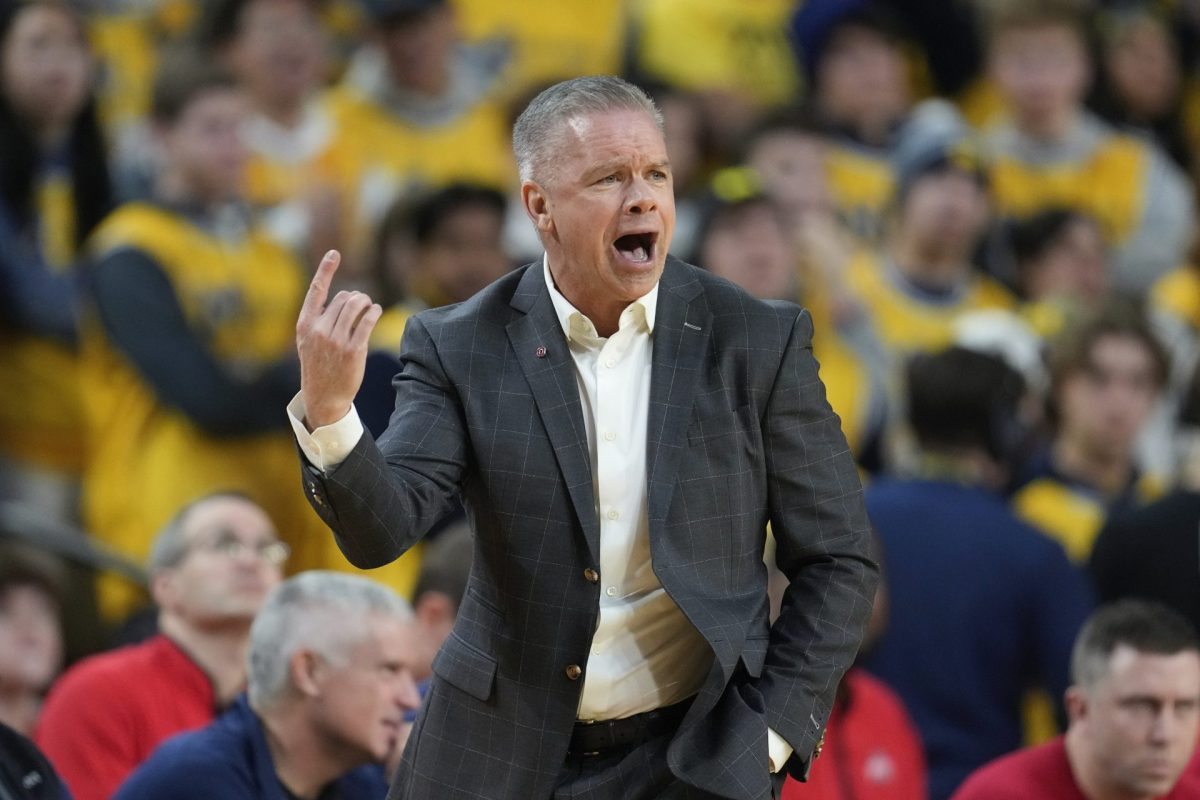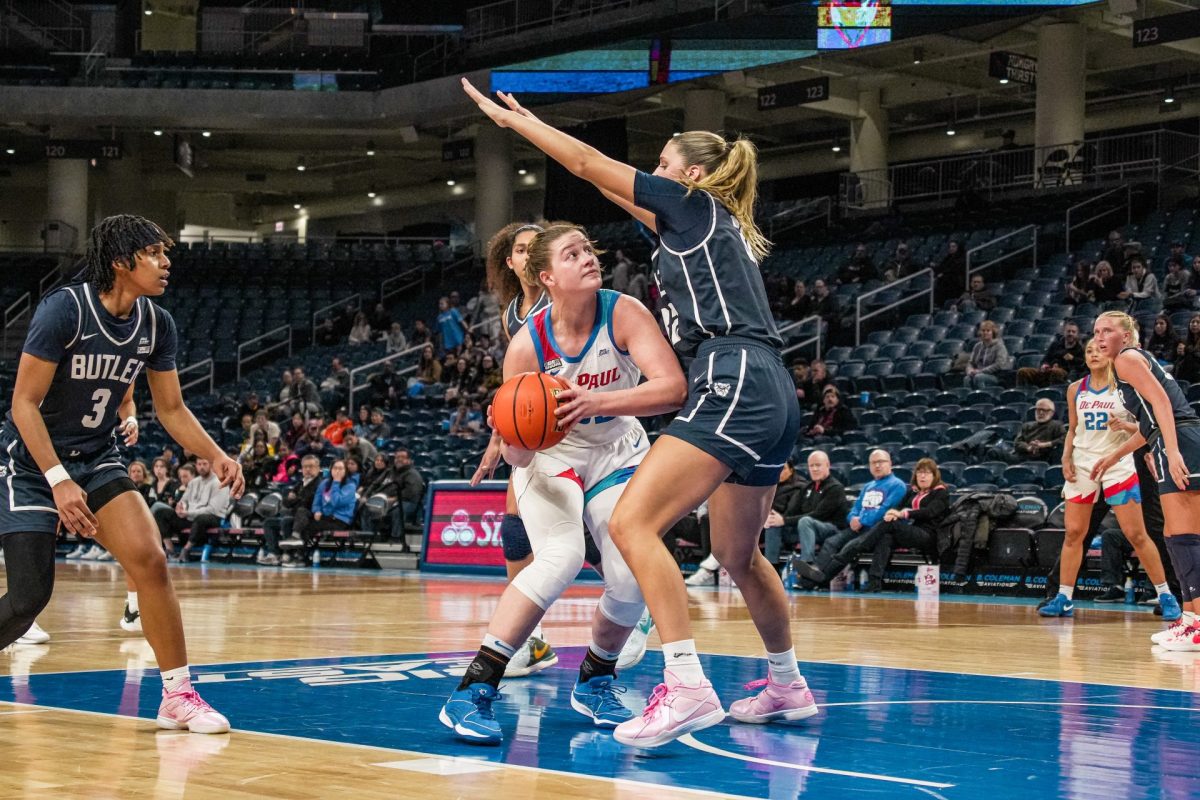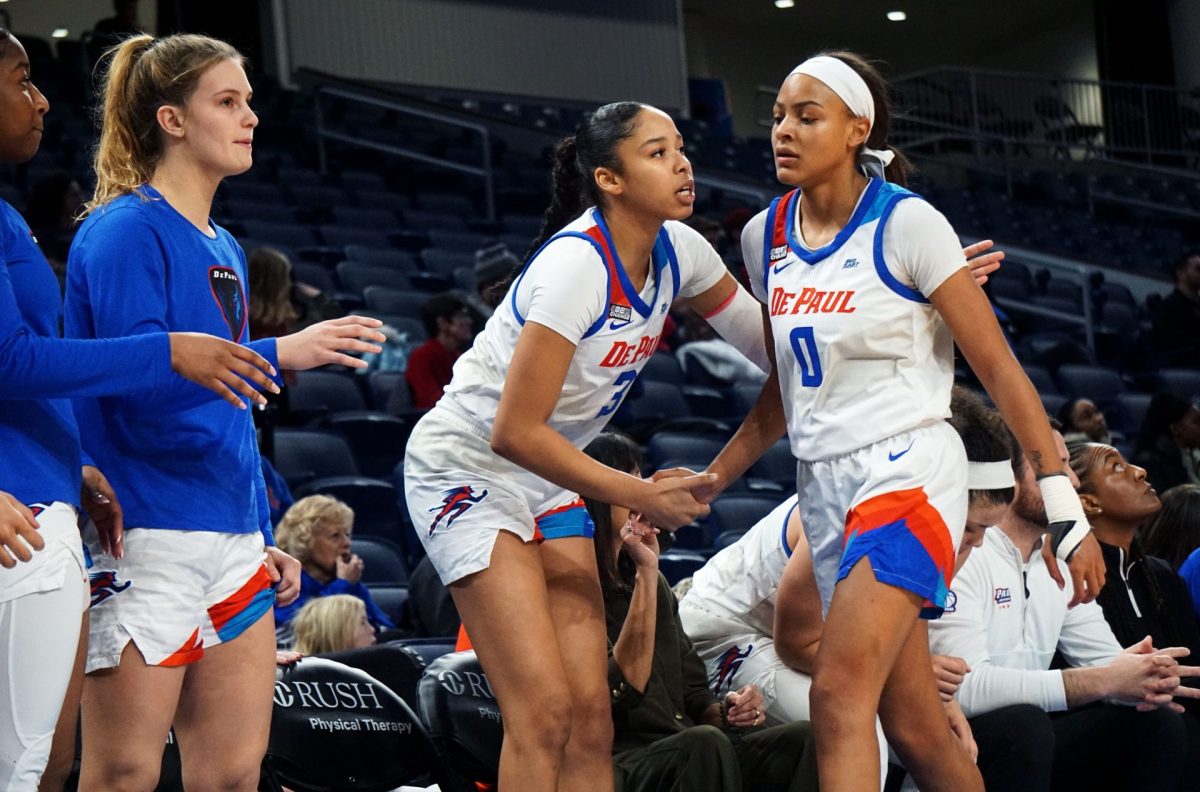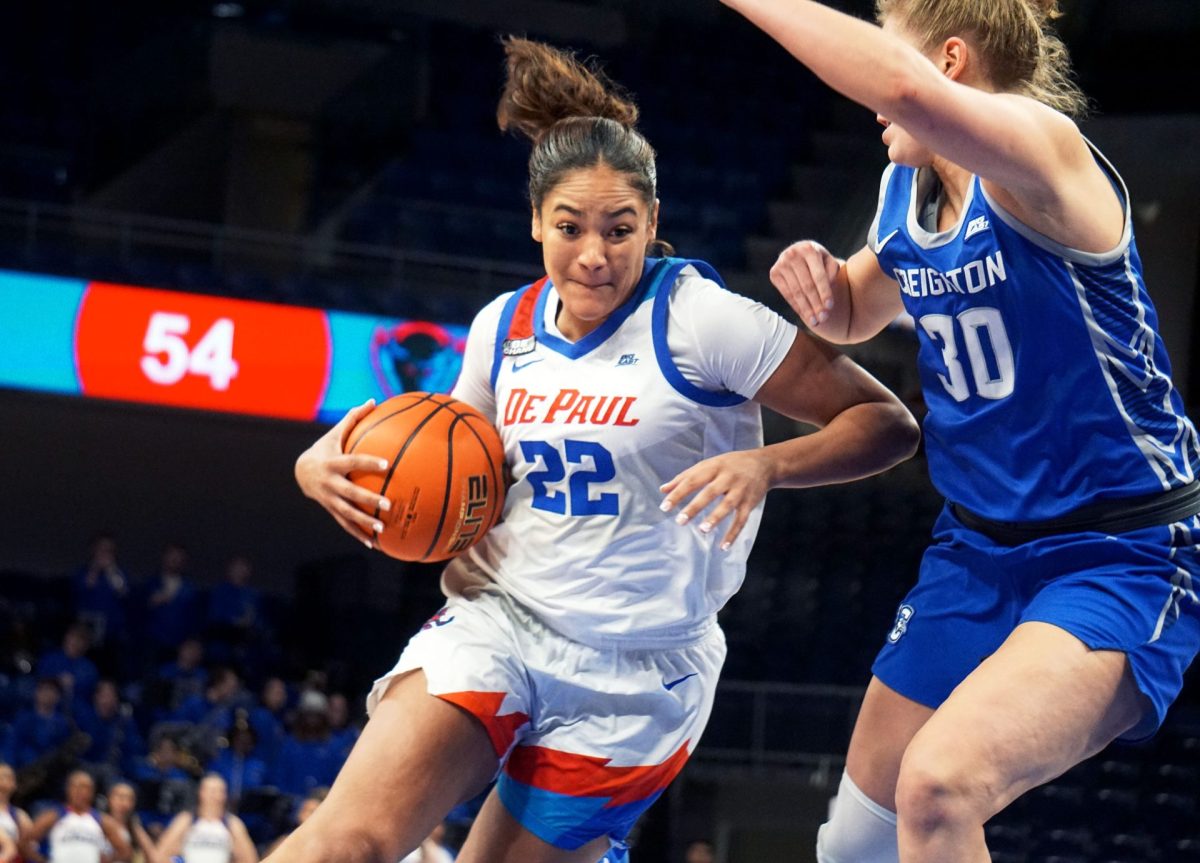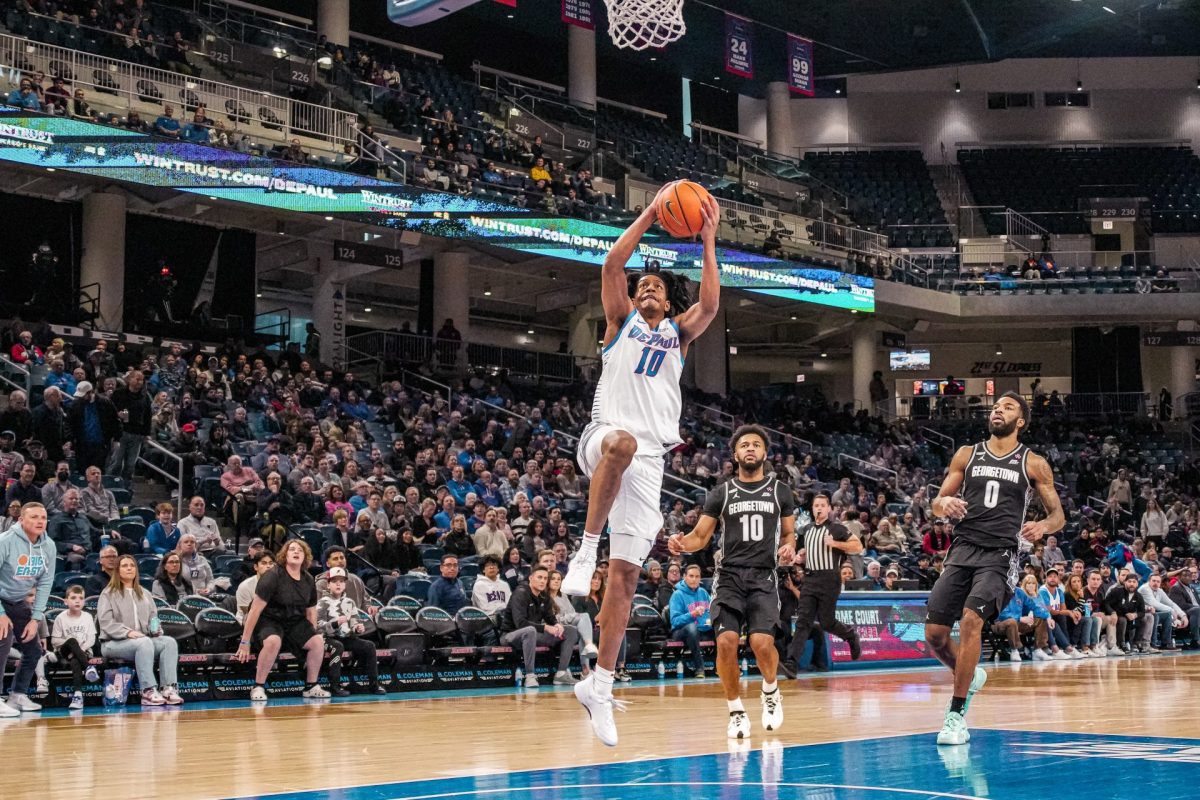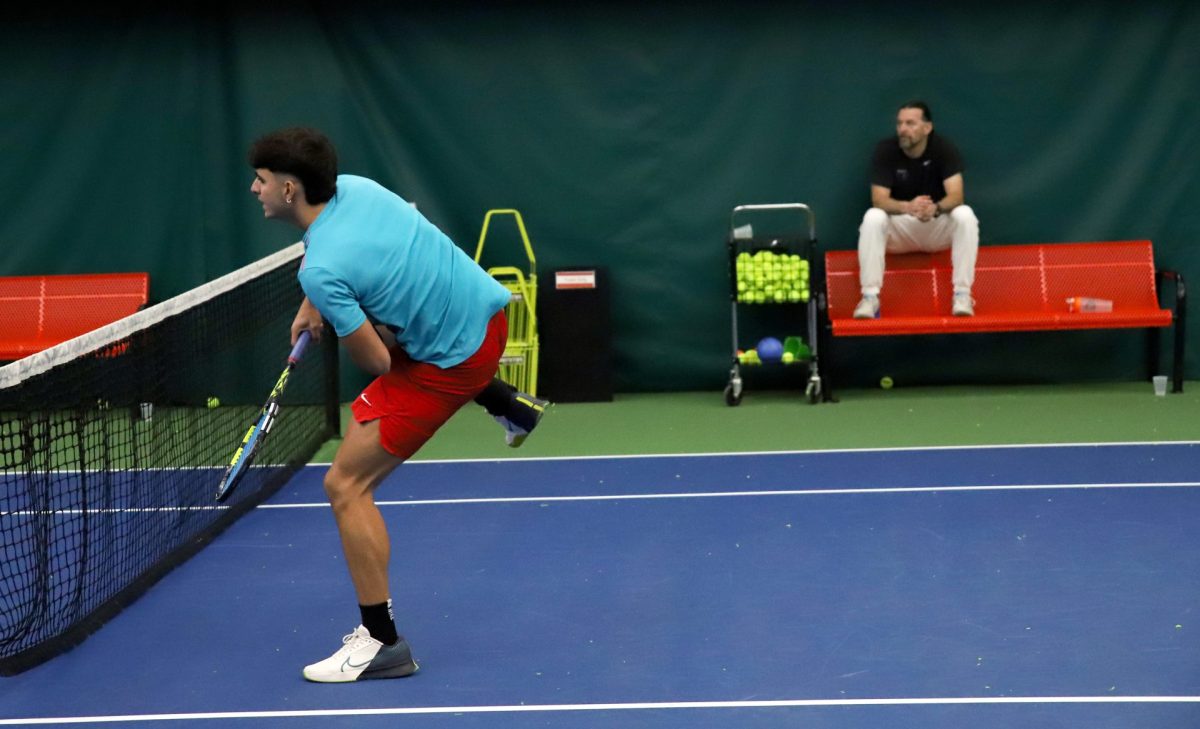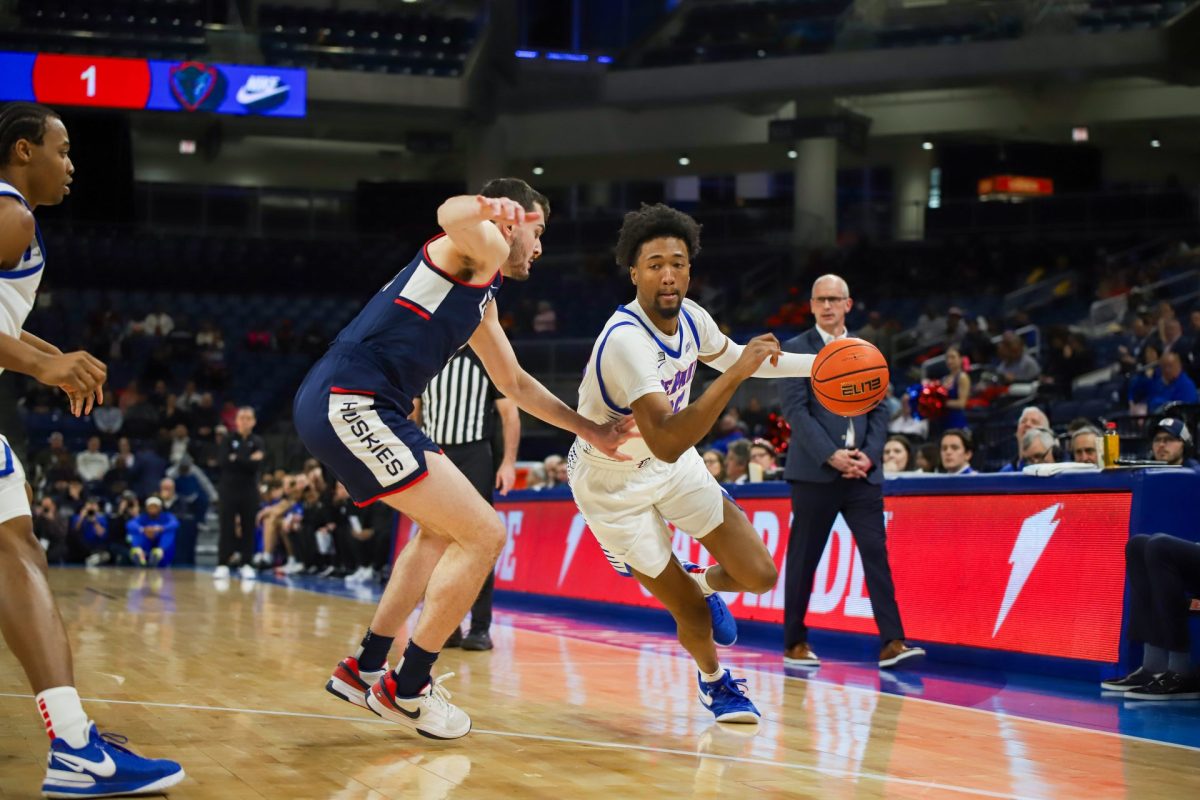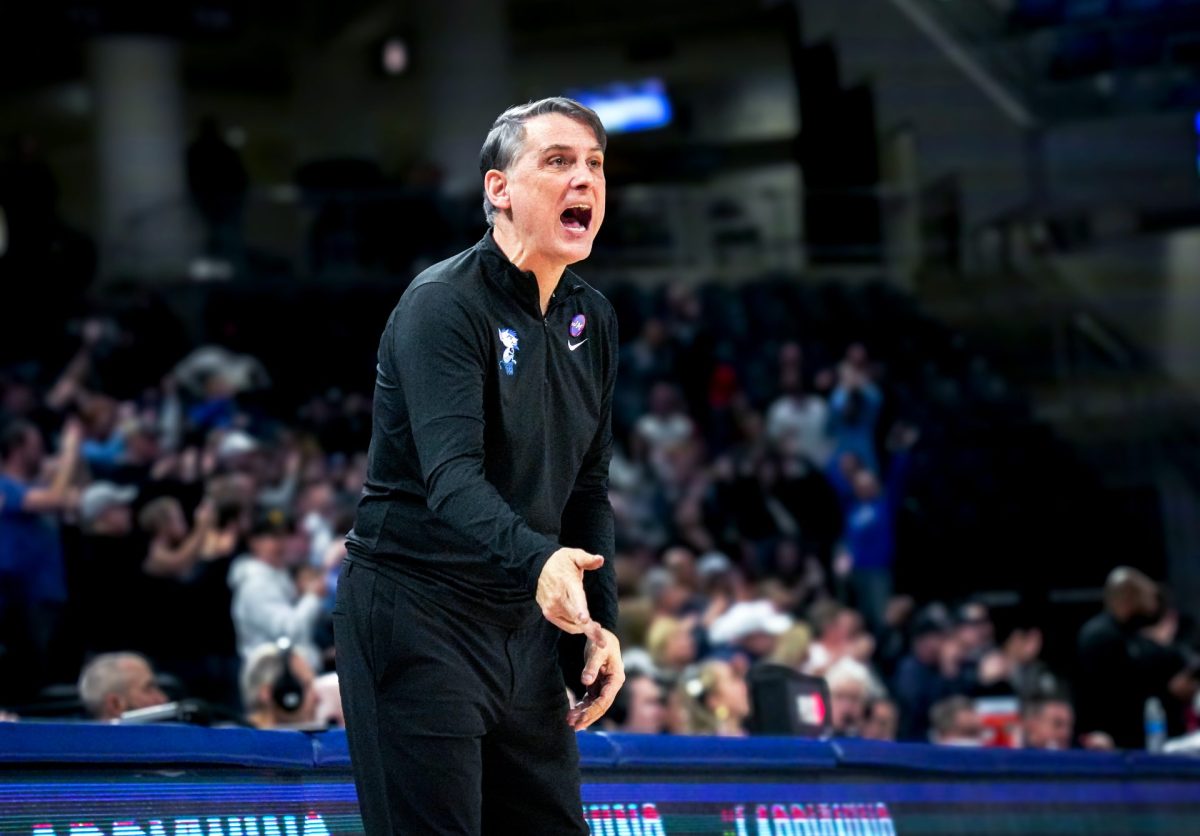[vc_row full_width=”stretch_row_content” css=”.vc_custom_1461527823525{background-image: url(https://depauliaonline.com/wp-content/uploads/2016/04/mens-bb.jpg?id=22026) !important;background-position: center !important;background-repeat: no-repeat !important;background-size: cover !important;}”][vc_column][vc_empty_space height=”300px”][vc_custom_heading text=” Game changer” font_container=”tag:h1|font_size:150|text_align:left|color:%23ffffff” google_fonts=”font_family:Oswald%3A300%2Cregular%2C700|font_style:700%20bold%20regular%3A700%3Anormal”][vc_custom_heading text=” The DePaulia’s basketball experts
propose changes to the game.” font_container=”tag:h2|font_size:50|text_align:left|color:%23ffffff” google_fonts=”font_family:Oswald%3A300%2Cregular%2C700|font_style:700%20bold%20regular%3A700%3Anormal”][vc_empty_space height=”200px”][/vc_column][/vc_row][vc_row][vc_column][vc_custom_heading text=”Men’s” font_container=”tag:h1|font_size:80|text_align:center” google_fonts=”font_family:Oswald%3A300%2Cregular%2C700|font_style:700%20bold%20regular%3A700%3Anormal”][/vc_column][/vc_row][vc_row][vc_column][vc_column_text]
 Change the shot clock
Change the shot clock
College basketball is stuck in the past.
It was only until this season that men’s basketball was somehow still using 35 seconds for the shot clock. Even then, 30 seconds is still too slow.
It’s time the NCAA catches up with the rest of basketball past the high school level — drop the shot clock to 24 and turn two halves into four 10-minute quarters.
“Nobody is playing with a shot clock longer than 30,” said analytics guru Ken Pomeroy, who has his advanced college basketball website KenPom. “Obviously, FIBA (International Basketball Federation) uses 24 now. Of course, the NBA has used 24 forever.
“We really proved this year that college basketball can handle 24, especially with shooting becoming the way it is.”
Pomeroy said that the shot clock dropping from 35 to 30 resulted in a four-possession increase and an increased efficiency. The average NCAA men’s basketball team averaged 72.1 points per game this season while last year team’s only averaged 66.7. Efficiency increased too with teams averaging 1.01 point per possession this year, compared to .99 last year.
In addition, Pomeroy said that teams embracing the 3-pointer has improved scoring even more. Dropping the shot clock to 24 will be one of the few advantages left for the defense, especially as shooting is getting better. Speeding up the game to 24 seconds would make for faster possessions and help with the fluidness of the game.
But it’s the flow of college basketball that needs to improve. Right now, the sport is too rigid — with poor possession after poor possession, followed by media timeouts that disrupt the flow of the game.
A way to combat this is quarters. The women’s game made this switch last season and it couldn’t have been better. Games sailed by in just under two hours, and even if media timeouts are longer for television, quarters can help with not making the TV timeouts feel as intrusive.
The NCAA, of course, is stubborn. As Pomeroy noted, it took years before the men’s game adapted to the 30 second shot clock while the women had used it since 1969.
But it’s time to update the men’s game. Keeping the shot clock at 30 seconds and halves doesn’t make college basketball unique — it makes it archaic.
— Matthew Paras
[/vc_column_text][/vc_column][/vc_row][vc_row][vc_column][vc_column_text]
 Play-ins for at-large teams only
Play-ins for at-large teams only
In 2011, the NCAA first started operating under an expanded first round in the NCAA Tournament. This meant an increase to four play-in games rather than just one.
What it also means is that some conference winners, particularly smaller schools in less powerful conferences, can be slighted when it comes to their automatic bid. Schools that win their conference tournament earn an automatic bid to the NCAA tournament and, for some schools, winning their conference tournament is their only way into the NCAA tournament.
Since the advent of the play-in round expansion, 48 teams have participated and half of those teams were conference winners. I believe this to be a slight to teams who went all the way to win their conference tournament.
What this policy allows is for middling, bubble teams like the 2015-16 version of Syracuse, to earn a slot in the Round of 64 while a conference winner Southern University is forced to play in an extra game because they are a smaller school. Those who win several games to earn the right to play in the NCAA tournament should not have to play an extra game just to find a way into the actual tournament.
The First Four should be a round for middling teams just like Syracuse, or like two of the participants in the round this year: Michigan and Tulsa. Neither Michigan or Tulsa did enough during the season to earn a bid to the NCAA tournament, and so they should have had to play an extra game to show they are worthy of making the NCAA tournament. Conference winners showed it during their conference tournaments.
This can benefit both the NCAA tournament games in the Round of 64 and the play-in games. If play-in games feature teams that are bubble teams, they are lilkely not going to be the small schools from the conferences that only send one school to the tournament. They are going to be teams like Michigan, who have an established fan base and can deliver bigger numbers.
NCAA tournament games are going to be highly watched anyways, so why not extend ratings to the play-in games by playing at-large teams instead of small schools who actually won their conference? — Ben Gartland
[/vc_column_text][/vc_column][/vc_row][vc_row][vc_column][vc_column_text]
 Eliminate one and done
Eliminate one and done
Increasing the NBA’s age limit to 20, thus making high school kids either go to college for at least two years or spend two years developing elsewhere, would increase the overall play in the league and even make college basketball itself more enjoyable to watch.
Baseball has the minor leagues, which is where the elite high school and mostly college prospects spend at least a year or part of a year developing. Hockey utilizes the minor leagues for players to develop who aren’t quite ready for the NHL yet, too.
Zach Harper, NBA writer for CBS Sports, thinks the NBA Development League (D-League) can fill that void for the NBA if a high school kid decides against going to college.
“In theory, you would have 30 D-League teams and it would be a real minor league system,” Harper said. “You would have to spend two years in the D-League, you would have to change the salary structures of the D-League because it’s comically low right now for what players get paid, and maybe you could have a certain amount of designated call-ups in the first two years to test them for a couple of games.”
It’s easy to look at players like Kevin Durant and Carmelo Anthony as successful one-and-done’s who made an immediate impact on the game upon their arrival in the NBA, but it’s just as easy to look at several one-and-done’s and see the opposite — Anthony Bennett and Greg Oden come to mind.
“I think it’s just a way (for general managers and owners) to protect themselves from making mistakes with high school players,” Harper said.
Making high school players spend two years in college or the D-League before jumping to the NBA would allow them to physically, mentally and athletically mature which would directly translate to more impactful rookies in the NBA and cut back on the transitional period so many college kids undergo when making the jump too early.
It would allow teams to truly build towards the future by adding players who can immediately positively impact the team rather than gambling on an underdeveloped 18 or 19-year-old. — Zachary Holden
[/vc_column_text][/vc_column][/vc_row][vc_row][vc_column][vc_custom_heading text=”Women’s” font_container=”tag:h1|font_size:80|text_align:center” google_fonts=”font_family:Oswald%3A300%2Cregular%2C700|font_style:700%20bold%20regular%3A700%3Anormal”][/vc_column][/vc_row][vc_row][vc_column][vc_column_text]
 Equal money for tournaments
Equal money for tournaments
$318,949 is how much DePaul should have made for their success in the NCAA tournament. The Big East should have been rewarded nearly $3.2 million for DePaul’s two victories in March to the Sweet Sixteen.
If women’s basketball was like the men’s game, a win would have earned at least $1.59 million over the next six years to be divided up among a team’s conference. This is because the NCAA specifically sets aside funds to reward teams for advancing in the tournament. That money is put into a pool based on income from the massive television deal the NCAA earns.
The women, meanwhile, get nothing.
Even making the admission that men’s college basketball is significantly more popular than women’s college basketball, that doesn’t mean the women shouldn’t be rewarded for success.
In 2011, CBS and Turner agreed to a deal that would pay $10.8 billion for a 14-year contract. If each men’s game this year was worth $1.59 million, that means .014 percent of revenue from that deal is being rewarded per win.
If the same logic were applied to the women’s television contract ($500 million over 11 years), that means that each team would earn $7,000 per win. While this is chump change compared to the men, it’s at least something. But even then, it’s not fair.
What’s going on now is a travesty. A program like DePaul’s, not to even mention the powerhouse that’s UConn, don’t get rewarded for their hard work and success.
What does this say for how we regard women’s sports?
And it’s not like no one pays attention to women’s college basketball. This year’s first and second round in the NCAA tournament drew an average of 346,000 viewers, up 46 percent from last year. The final between UConn and Syracuse drew nearly 3 million viewers as well.
DePaul head coach Doug Bruno has been around the game long enough to know how the sport has grown. Bruno, who has been at DePaul for 30 years, has seen the implementation of scholarships for athletes to building interest in a program
Men’s basketball is always going to be the significant draw, but that doesn’t mean the NCAA has to ignore the women either. — Matthew Paras
[/vc_column_text][/vc_column][/vc_row][vc_row][vc_column][vc_column_text]
 Shorten the shot clock
Shorten the shot clock
Before the 2015-16 season, women’s basketball took great strides into streamlining the game across the board. They moved to quarters and changed the advancing the ball rules to reflect how the game is played both with FIBA rules and with WNBA rules. These changes helped simplify rules and stopped them from jumping around depending on what level the game was being played.
There’s one more rule that I believe NCAA women’s basketball should change to reflect the other levels of the sport and that’s to reduce the shot clock to 24 seconds. This is the standard the WNBA and FIBA both play at, and there are several reasons why the NCAA should make the switch.
“I would like to see that change,” Fox Sports reporter LaChina Robinson said about lowering the shot clock to 24 seconds. “I am all for the speed of the game picking up. I think that it’s more exciting when the game is fast-paced.”
The first is that it will speed up possessions. Teams will be forced to shoot more frequently and offense will increase. There have been teams who have used a higher-paced offense to success, namely DePaul.
DePaul women’s basketball head coach Doug Bruno has talked in the past about how the system he uses, with high-intensity offense and high-pressure defense, isn’t just used to win games but also put fans in seats. It has worked for DePaul as they have been top-50 in attendance in the nation for women’s basketball for the past five years, bringing in around 2700 fans each season. While that number may pale in comparison to men’s attendances, it does show they are a team that people who are going to watch women’s basketball will watch.
Fans like high-offense games and teams like Villanova, who slow the game down, are able to win some games but do not make games exciting to watch. This is an issue in both the men’s and women’s games as teams have 30 seconds to run down the shot clock and keep the game slow.
“A great example of that is DePaul,” Robinson said. “Doug Bruno’s system believes in quick shooting so there are more possessions in a game, higher scoring and I think increased excitement when the game is faster.”
More possessions and more excitement would be beneficial to both men’s and women’s basketball. — Ben Gartland
[/vc_column_text][/vc_column][/vc_row][vc_row][vc_column][vc_column_text]
 Lower the rims
Lower the rims
Women play with a smaller ball, have a slightly closer 3-point line, have a 30-second shot clock and should begin playing with a nine-foot basket to make the game more enjoyable.
It may appear as if you’re making the game easier by lowering the rim, but in reality, women are naturally shorter than men, so if anything, it’s making the game play at the same level of difficulty as the men in the college game and NBA.
“There’s a lot of ego involved,” Melissa Isaacson, columnist for ESPNW, said. “If you put your ego aside — that’s really what I think most of it is — it makes a lot of sense.”
Connecticut women’s basketball coach Geno Auriemma threw out the idea in 2012 and it hasn’t been talked about much since then until former University of Delaware and current Chicago Sky star Elena Delle Donne brought it up again and shared a similar belief to Auriemma. Isaacson thinks the idea would only benefit the women’s game.
“It would speed up the game, you could get the ball off the rim quicker, you’d get out in transition faster (and) it would extend players’ shooting range,” Isaacson said.
It would open up more chances for women to dunk, too. Right now six-foot-eight Brittney Griner is the only active WNBA player to have dunked in a game. Candace Parker, Lisa Leslie, Michelle Snow and Sylvia Fowles join her as the only others to have done it in the history of the WNBA.
Isaacson admits “it doesn’t have to be crazy acrobatic dunking,” but the possibility of multiple dunks in the women’s game would make it more exciting and bring it closer to the men’s game.
“It’s a way to show off a man’s athleticism in a way that women don’t have the ability to do,” Isaacson said.
Playing on a nine-foot rim is the last remaining factor to bring the women’s game as close to the men’s as possible. It would increase fandom and viewership by making the game more enjoyable to watch and play for the women. — Zachary Holden
[/vc_column_text][/vc_column][/vc_row]


